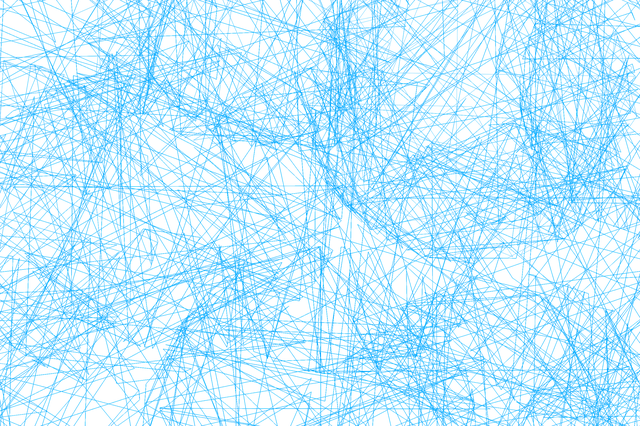Neuroimaging techniques like MRI, CT, and PET scans are indispensable tools for diagnosing Alzheimer's disease, visualizing brain changes such as atrophy and amyloid plaques, and tracking disease progression over time. Functional imaging methods further enhance diagnosis by mapping brain activity and identifying early cognitive impairment not visible through structural imaging. These advanced technologies enable healthcare professionals to differentiate Alzheimer's from other dementias, facilitating timely intervention and personalized patient care.
Alzheimer’s disease diagnosis hinges on identifying subtle brain changes. Medical imaging, especially neuroimaging techniques, plays a pivotal role in this process by revealing the intricate patterns of atrophy and amyloid plaques that signal cognitive decline. From structural scans detecting volume loss to functional imaging mapping memory networks, these advanced tools offer valuable insights into the progression of the disease. This article explores various neuroimaging techniques transforming Alzheimer’s diagnosis, enhancing accuracy, and paving the way for personalized treatment approaches.
Neuroimaging Techniques: Unveiling Brain Changes
Neuroimaging techniques have become indispensable tools in the quest to diagnose Alzheimer’s disease, allowing researchers and medical professionals to unveil the subtle brain changes associated with this devastating condition. Through advanced technologies like magnetic resonance imaging (MRI), computed tomography (CT), and positron emission tomography (PET), scientists can peer into the intricate architecture of the brain, identifying structural alterations and functional impairments that may otherwise go undetected.
These techniques enable the visualization of brain atrophy, the accumulation of amyloid plaques, and tau proteins, which are hallmarks of Alzheimer’s disease. By tracking these changes over time, researchers can better understand the progression of the disease and develop more effective diagnostic criteria. Moreover, neuroimaging helps differentiate Alzheimer’s from other forms of dementia, ensuring accurate and timely intervention.
Detecting Atrophy and Plaques: Key Indicators
Medical imaging plays a pivotal role in diagnosing Alzheimer’s disease (AD), offering insights into brain changes that are key indicators of the neurodegenerative process. Neuroimaging techniques, such as magnetic resonance imaging (MRI) and computed tomography (CT), have become indispensable tools for healthcare professionals. Through these advanced technologies, doctors can visualize structural alterations in the brain, including atrophy and the accumulation of amyloid plaques.
Atrophy refers to the gradual shrinking or loss of brain cells, which is a prominent feature of AD. By comparing brain scans over time using neuroimaging techniques, physicians can detect regional atrophy patterns specific to AD. Moreover, the identification of senile plaques, composed primarily of beta-amyloid protein, is crucial. These plaques form between neurons and are believed to contribute to the disease’s progression. Advanced imaging methods enable early detection of these plaques, facilitating timely diagnosis and intervention strategies.
Functional Imaging: Mapping Cognitive Decline
Functional imaging is a powerful tool within the realm of neuroimaging techniques, offering insights into the intricate workings of the brain as it relates to cognitive decline and Alzheimer’s disease. By tracking blood flow and metabolic activity, this method allows researchers to map out areas of the brain that are either over or underactive during specific tasks. Such dynamic maps reveal how the brain adapts to changing demands, providing crucial data in diagnosing and understanding Alzheimer’s pathology.
This approach is significant because it enables doctors to identify early signs of cognitive impairment not evident through structural imaging alone. By studying patterns of brain activation, healthcare professionals can better assess the severity and progression of Alzheimer’s-related changes, leading to more informed treatment decisions.
Advanced Scans: Enhancing Diagnosis Accuracy
Advanced scans, including cutting-edge neuroimaging techniques like functional magnetic resonance imaging (fMRI) and positron emission tomography (PET), are revolutionizing the diagnosis of Alzheimer’s disease. These technologies offer a glimpse into the brain’s intricate workings, enabling healthcare professionals to detect subtle changes associated with cognitive decline. By measuring blood flow, metabolic activity, and the presence of specific proteins, fMRI and PET scans provide valuable insights that traditional methods might miss.
The accuracy and precision of these neuroimaging techniques allow for earlier and more precise identification of Alzheimer’s-related pathology. This is crucial as early intervention can significantly impact the progression of the disease. Advanced scans also aid in distinguishing Alzheimer’s from other forms of dementia, ensuring patients receive tailored care that addresses their unique needs.
Medical imaging, particularly through advanced neuroimaging techniques, plays a pivotal role in diagnosing Alzheimer’s disease by revealing subtle brain changes that indicate cognitive decline. By detecting atrophy and plaques, functional impairment, and neural connectivity alterations, these tools provide essential insights for early and accurate diagnosis. As technology advances, improved scan accuracy empowers healthcare professionals to better navigate this complex condition, ultimately fostering more effective treatment strategies.
